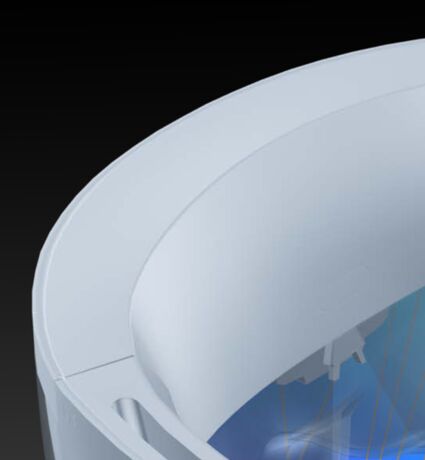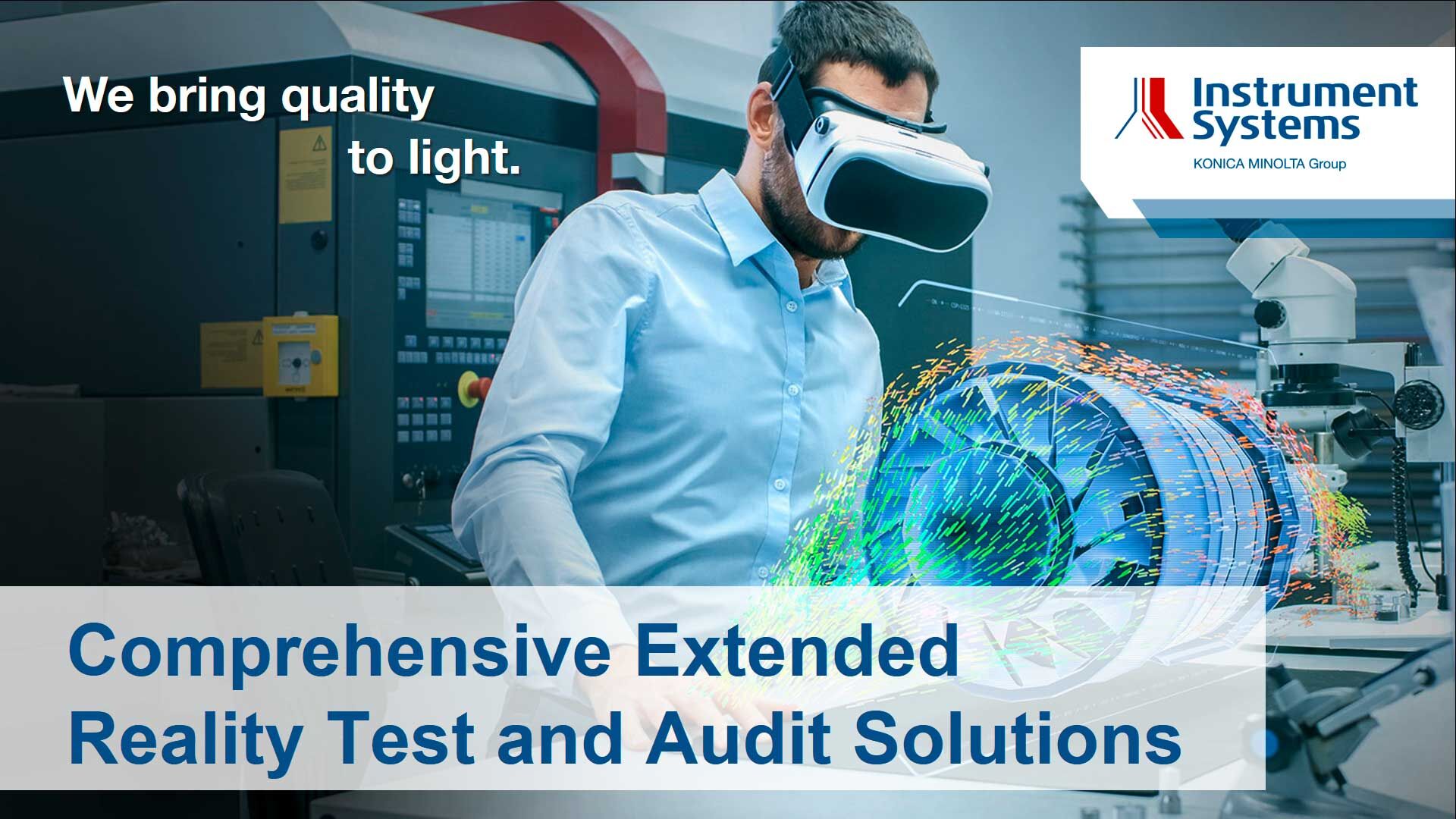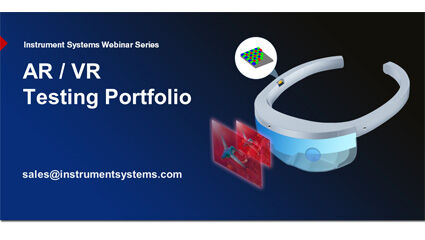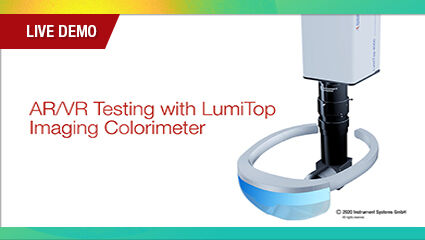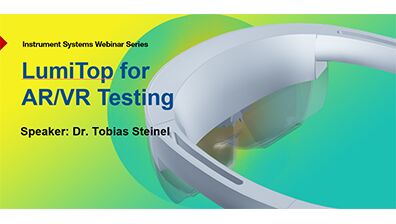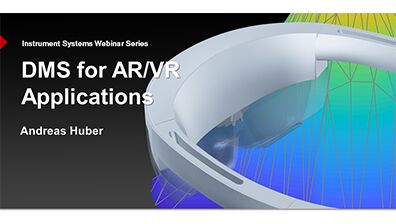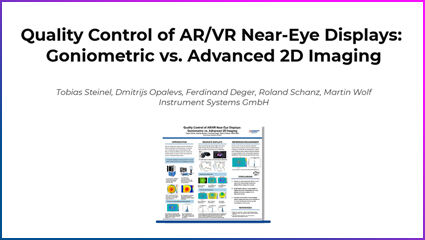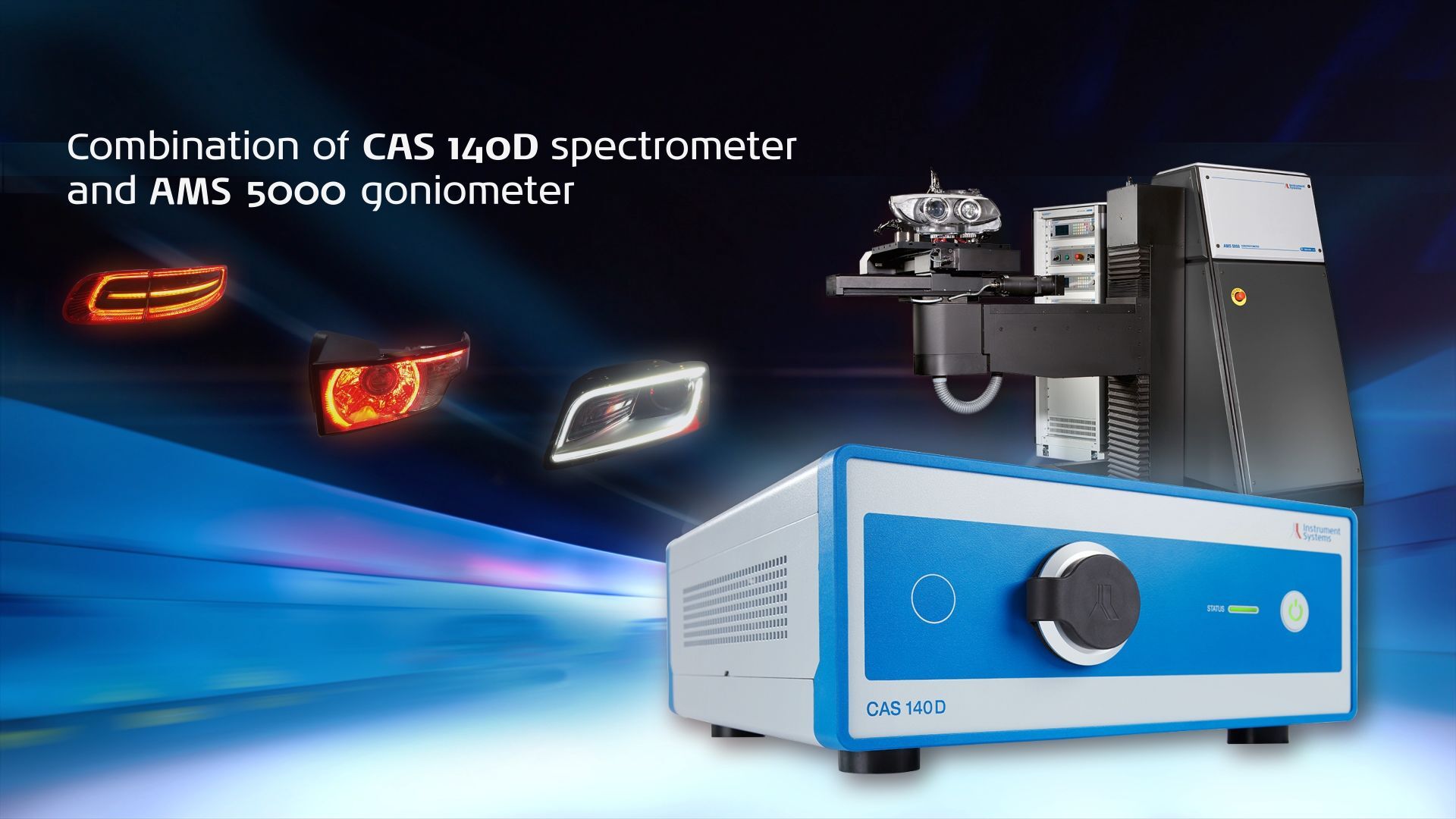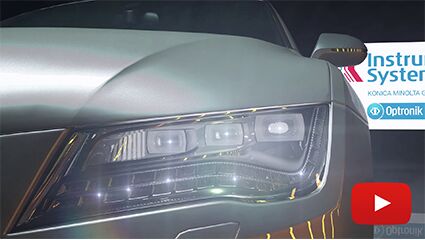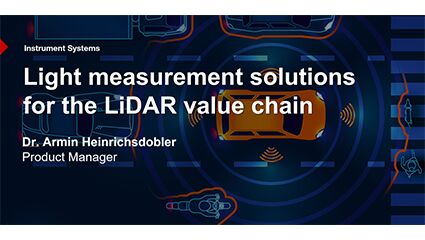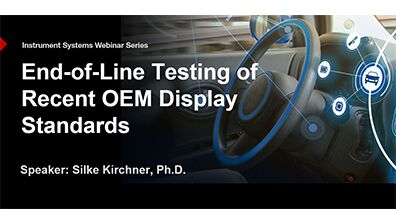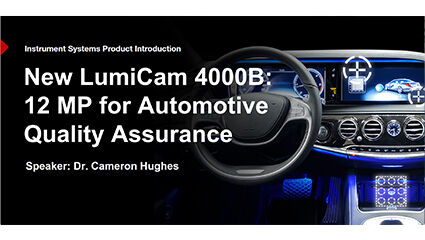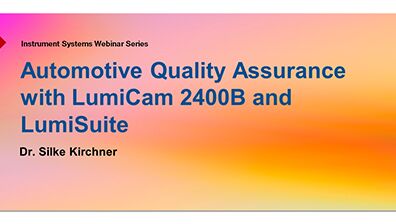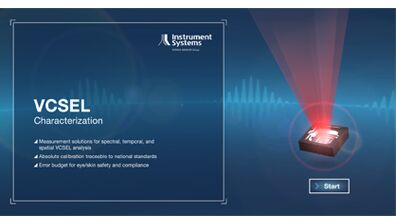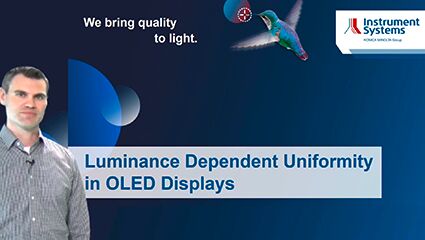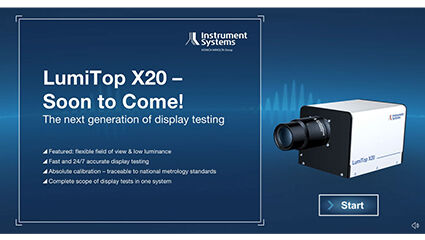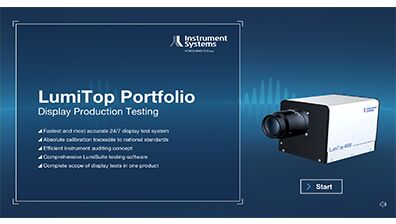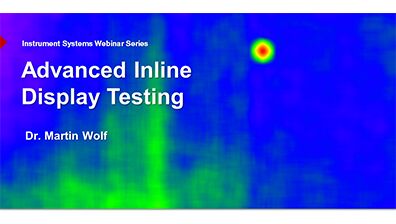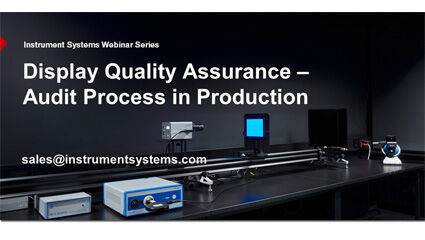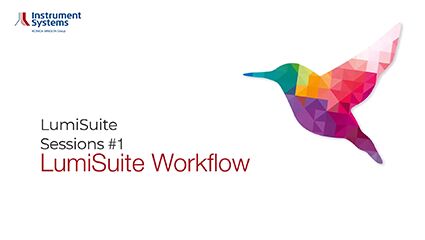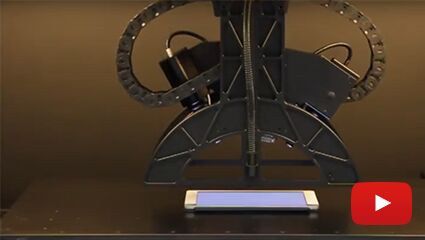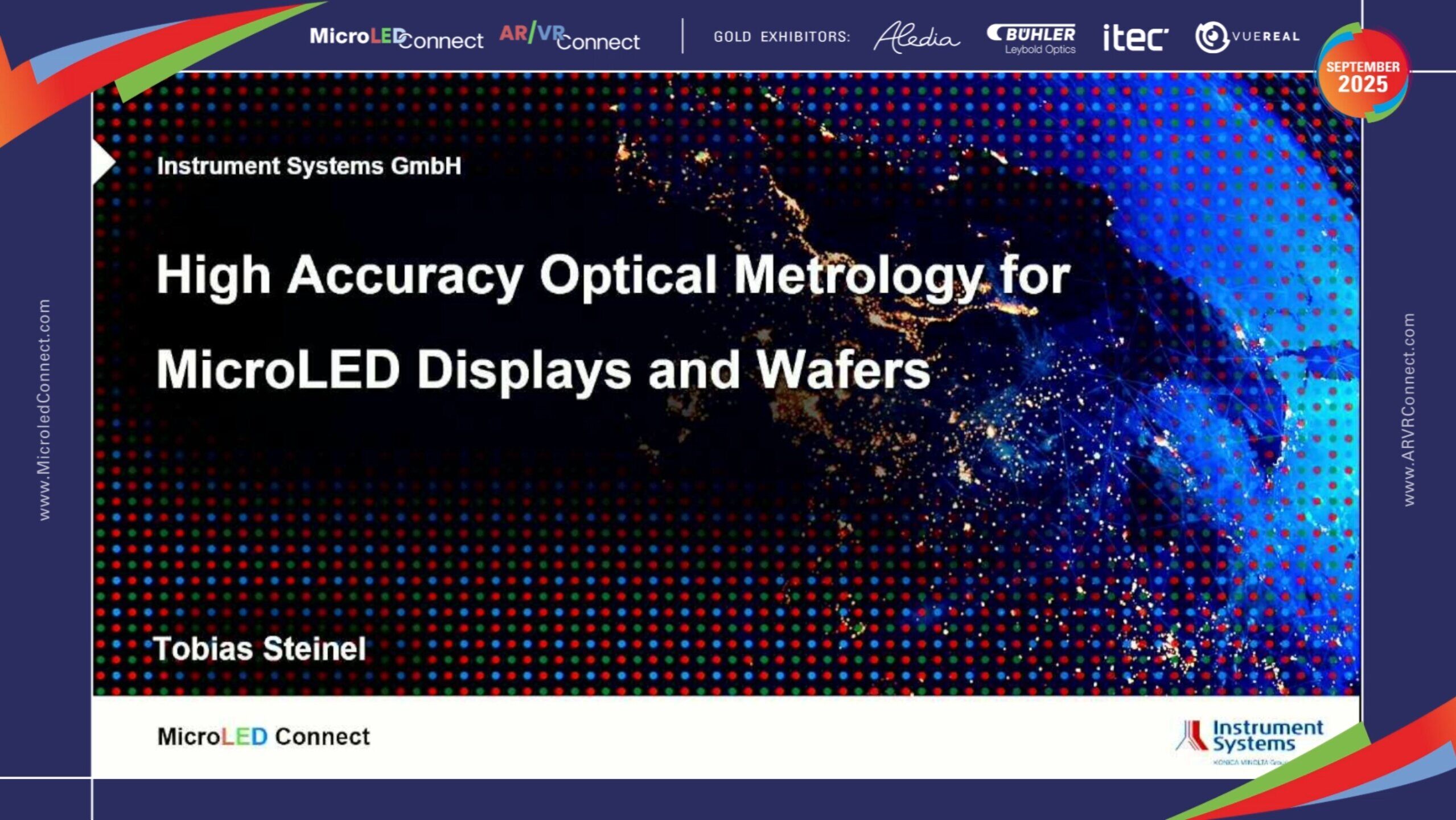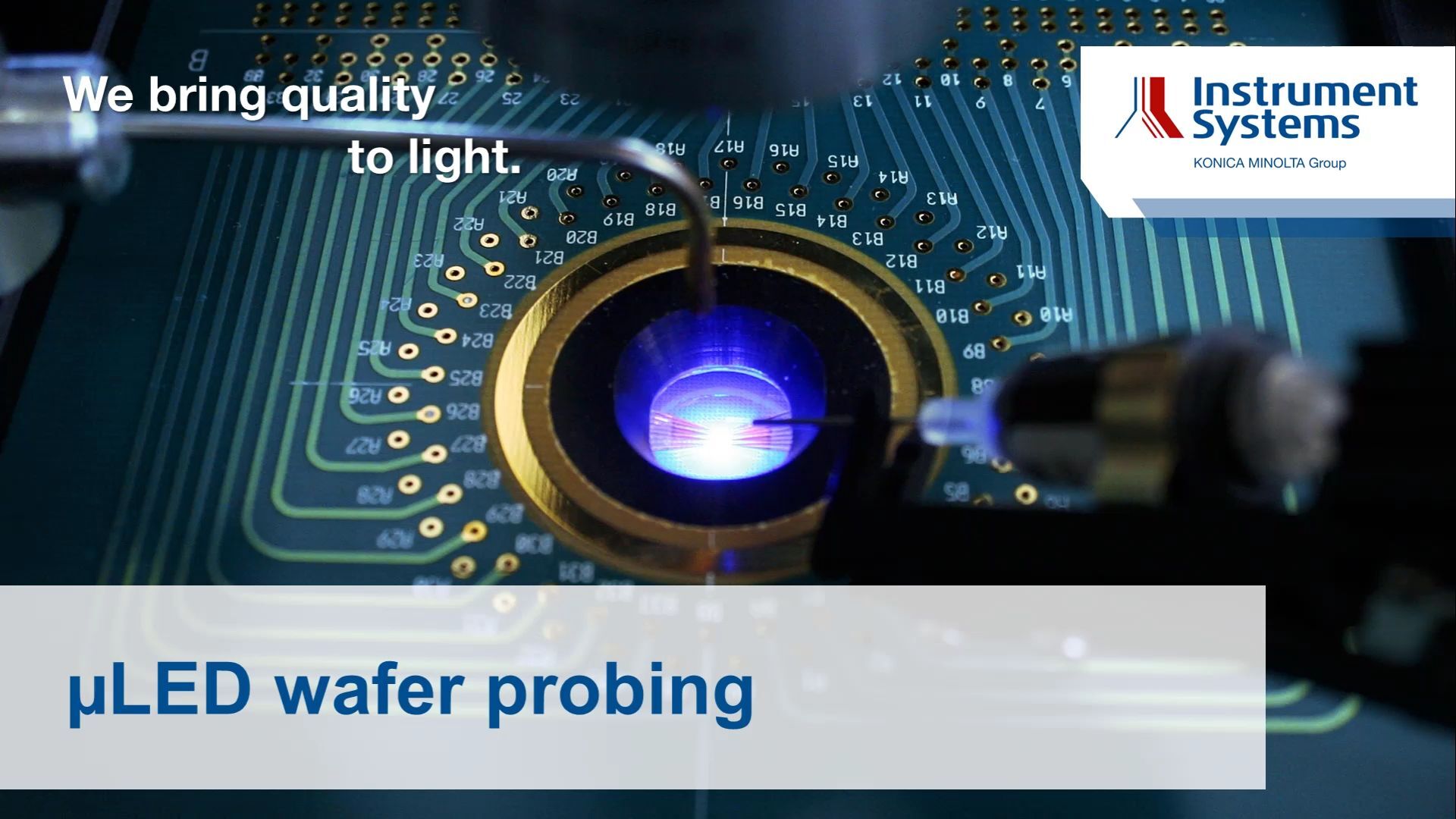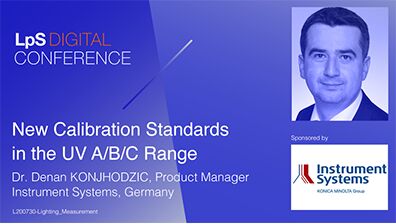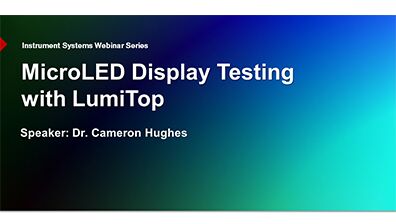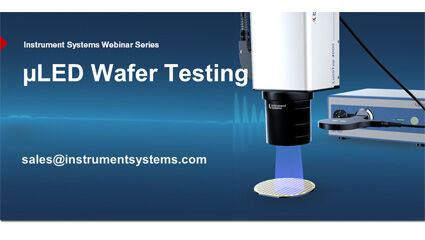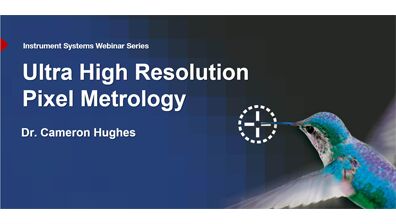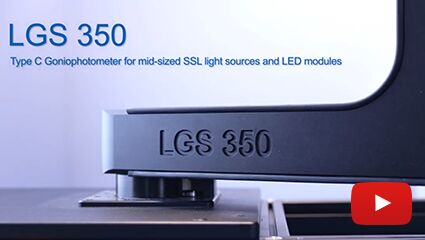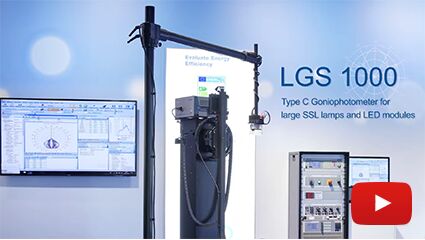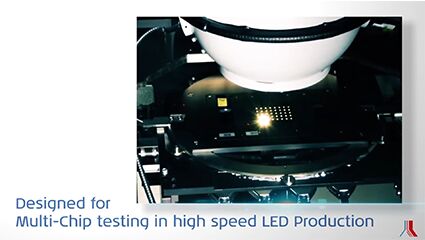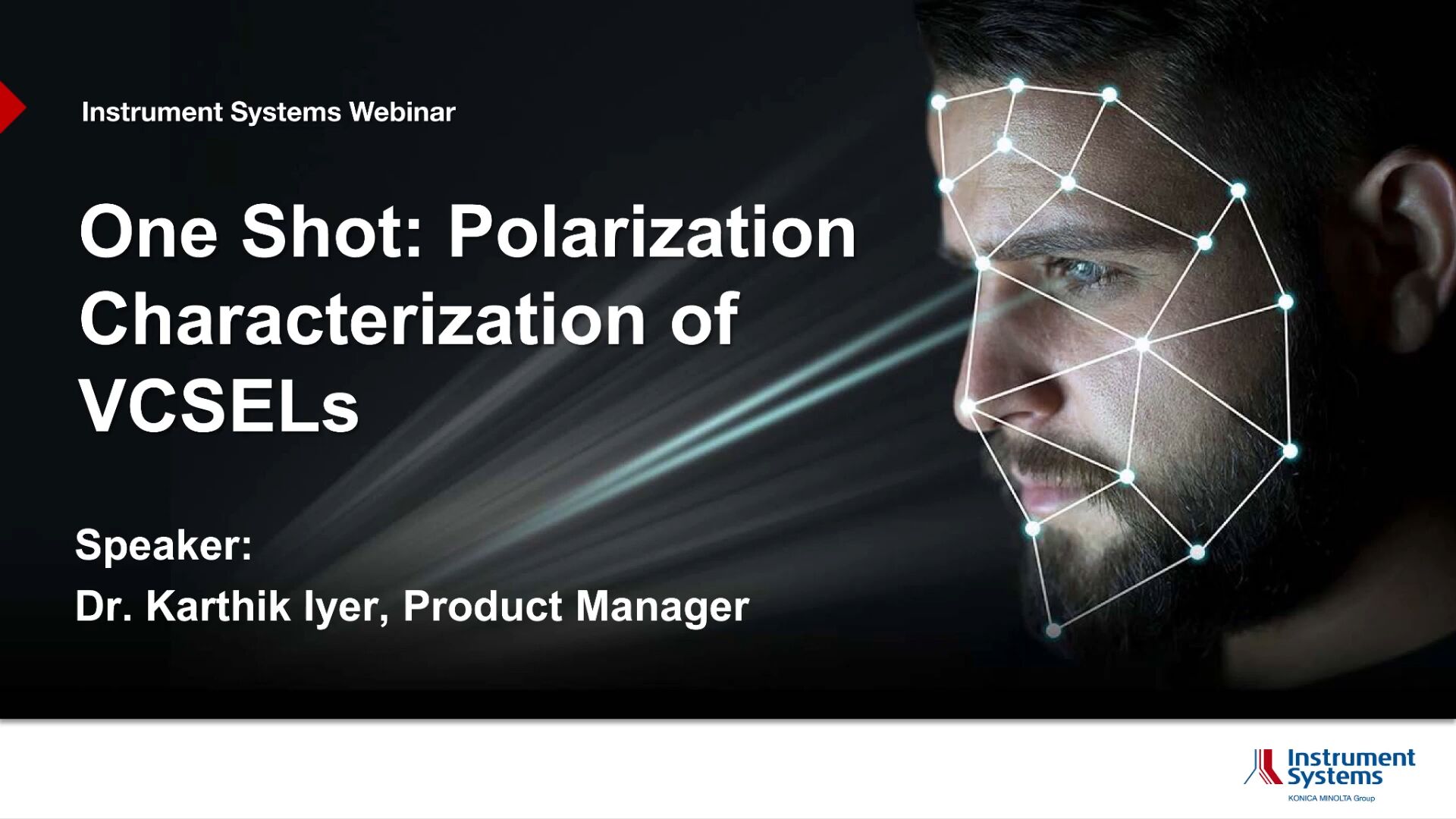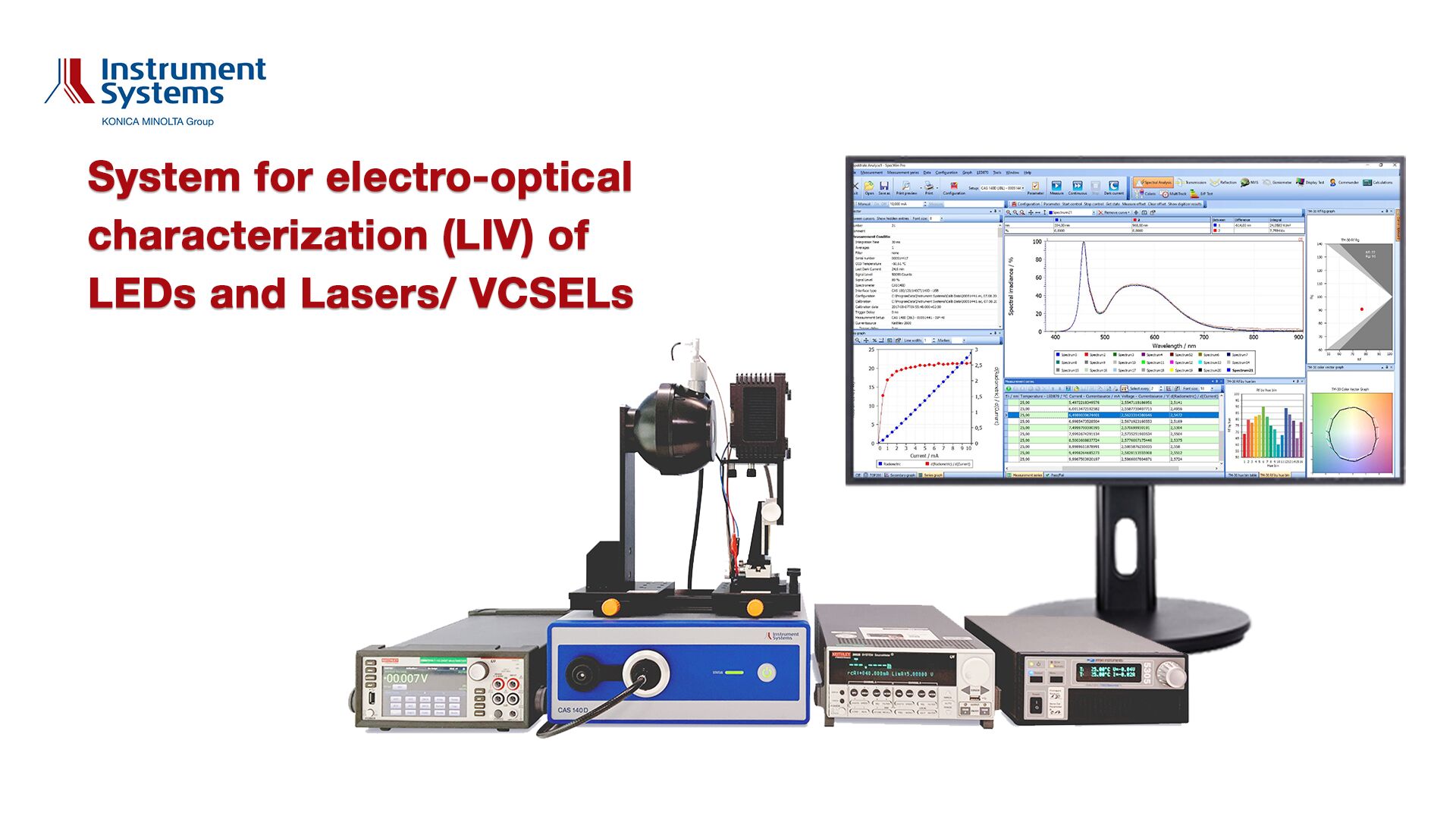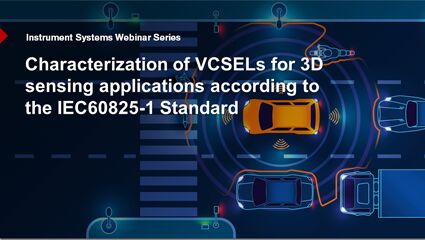During the design phase, it is often crucial to push measurements to physical limits in order to accurately evaluate optical components and detect systematic variations in display performance. For near-eye displays, for example, parameters such as absolute accuracy of color, luminance, diffraction-limited sharpness (MTF), and distortion are essential for optimizing design and improving user visual perception. In the production phase, speed, reliability, and traceable long-term accuracy are key requirements. This presentation will introduce optical extended reality testing concepts that link complementary measurement tasks through a maintenance-free, traceable reference and calibration solution, as well as a dedicated audit concept to ensure seamless quality assurance throughout the entire development and production cycle, from Lab to Fab.
Speaker: Dr. Tobias Steinel
Duration: 25:00 minutes
Watch the video
AR/VR devices are used in various fields of applications, e.g. to assist machine operation in production, in the medical field, transport industry or the entertainment branch. Display or calibration errors distract from the wearer’s sense of immersion in the virtual world. In quality assurance they must be reliably recognized and evaluated. This opens up a new and exciting field for display measurement subject to constantly changing demands on the technology.
Speaker: Dr. Tobias Steinel
Duration: 14:35 minutes
Watch the video
Instrument Systems brings the accuracy and speed of the industry proven display test station LumiTop to AR/VR. In this video Ferdinand from Instrument Systems gives you a brief introduction to the human eye inspired optics and how to measure and analyse the virtual image of an AR/VR device, using the spectrally enhanced imaging colorimeter LumiTop AR/VR and the LumiSuite software.
Speaker: Dr. Ferdinand Deger
Duration: 02:58 minutes
Watch the video
Augmented and Virtual Reality (AR/VR) Headsets make use of so-called Near-Eye-Displays (NED) and pose new challenges to display metrology and testing. In this video, we demonstrate how we combine the speed of a 2D camera, the high accuracy of a spectroradiometer and optics inspired by the human eye to provide fast and accurate testing solutions for production and lab. LumiTop AR/VR is made for leading edge AR/VR Head-Mounted Devices (HMD).
Speaker: Dr. Tobias Steinel
Duration: 06:46 minutes
Watch the video
Instrument Systems optimized the DMS goniometric display measurement system for AR/VR applications. This video shows a real-time AR device measurement using DMS and its unique microscope optics.
Speaker: Andreas Huber
Duration: 6:33 minutes
Watch the video
Near-Eye Displays (NED) might require various test devices in different development and production phases. The seamless use of complementary measurement principles and Light Measurement Devices (LMDs) by means of an absolute and traceable calibration concept can help to improve speed and accuracy in the product creation process. Traditionally two approaches have been proposed: sampling spot measurements and camera based solutions and both have their advantages.
Speaker: Dr. Tobias Steinel
Duration: 05:03 minutes
Watch the video
To meet the requirements of color measurement deviation in automotive lighting, we have complemented the AMS far-field goniometer system with a high-class CAS 140D spectroradiometer. The combination of two worldwide-approved measurement systems guarantees highly reliable product approval tests, including all desired spectral analysis.
Duration: 03:49 minutes
Watch the video
The AMS 5000 is a high-performance goniophotometer for the measurement of automotive headlamps and various light sources of traffic signaling applications.
Duration: 03:30 minutes
Watch the video
Our Product Manager Armin Heinrichsdobler presents light measurement solutions for the whole LiDAR value chain.
Speaker: Dr. Armin Heinrichsdobler
Duration: 02:18 minutes
Watch the video
The purpose of the presentation is to outline a selection of main OEM display requirements, how test parameters can be experimentally verified and to discuss what to expect in regards of time efficiency for EOL solutions.
Speaker: Dr. Silke Kirchner
Duration: 10:15 minutes
Watch the video
Light generating elements in the modern automotive cabin can be controlled with ever finer spatial control. To keep pace with this development, Instrument Systems will introduce the LumiCam 4000B in Q4 2021. The LumiCam 4000B employs a 12 MP camera for 2D high resolution luminance and color measurements to detect defects on a sufficient level for demanding automotive quality assurance standards.
Speaker: Dr. Cameron Hughes
Duration: 2:00 minutes
Watch the video
Instrument System`s mission to continuously fulfil the growing demands of modern light measurement has advanced our industry leading precision colorimeter LumiCam in a new hardware and software makeover. New motorised objective lenses, a faster filter wheel movement and a more compact design of the LumiCam 2400B in comparison to its predecessor model are only some of the features that push the measurement experience to the next level.
Speaker: Dr. Silke Kirchner
Duration: 7:49 minutes
Watch the video
The rise of VCSEL arrays imposes new challenges on its characterization. Especially, spatial measurements in the near and far field of a VCSEL array are required. Camera-based imaging systems and conoscopes are suitable for production testing of spatial VCSEL characteristics. In-line testing of VCSELs with nanosecond pulses will become more and more relevant with their increasing spread in time-of-flight applications.
Experience our VCSEL portfolio interactively in our video!
Duration: 0:45 minutes
Watch the video
Next generation OLEDs displays have in principle infinite contrast ratios due to their emittive nature. However, in practice OLED displays show non-uniformities at very low luminance which have to be measured and corrected in order to maintain constant contrast. In this presentation, uniformity measurements at very low luminance will be presented and results from displays from a variety of manufacturers will be compared.
Speaker: Andreas Liebel
Duration: 08:02 minutes
Watch the video
A special highlight at Display Week 2021 will be the preview of the new LumiTop X20, upcoming in autumn 2021. Building on the established 2700 and 4000 models, the LumiTop X20 will offer a high-resolution camera, a flexible field of view and a high dynamic range for both high and low luminance measurements. Target applications for the X20 are the measurement of homogeneity (particularly high/low luminance) and defect detection.
Duration: 0:39 minutes
Watch the video
With its comprehensive LumiTop portfolio, Instrument Systems offers fast and highly precise solutions for all sorts of display measurement tasks. We cover every stage of the production line for standard tests in consumer electronics and automotive, as well as challenging applications like AR/VR eye-box measurement, µLED wafer testing and pixel analysis.
Duration: 1:31 minutes
Watch the video
We are your partner to take inline display testing to the next level. Our measurement device LumiTop was specifically developed to meet all requirements of production testing. It provides fast and reliable 24/7 operation for 100% inline test with highest accuracy. In combination with our smart instrument audit process, display testing becomes more efficient and more accurate.
Speaker: Dr. Martin Wolf
Duration: 6:29 minutes
Watch the video
Displays are essential, differentiating elements of many consumer products as for example mobile phones. For manufacturers it is crucial to ensure the highest display quality for their products by 100% quality check in their production line. With Instrument Systems test and audit solutions, display quality reaches a new level of quality and prodcutions costs can be minimized.
Speaker: Dr. Martin Wolf
Duration: 7:29 minutes
Watch the video
The LumiSuite software platform was specially developed for Instrument Systems imaging colorimeters. With its diverse measuring functions and evaluations, the LumiSuite software is ideally suited to the comprehensive characterization of displays. For applications in the lab and in quality control the software offers an extensive, user-friendly graphic user interface (GUI). It contains flexible tools for a wide range of evaluations, and new functions are constantly being added. The additional software development kit (SDK) enables simple, flexible and reliable integration into automated display production lines.
Duration: 04:35 minutes
Watch the video
The DMS 903 turnkey solution is based on a fully motorized 6-axis goniometer for determining luminance, contrast, and color properties at different viewing angles and variable electrical driving. The measurement system is perfectly suitable for all applications in research and development, as well as quality control.
Duration: 03:05 minutes
Watch the video
From wafer to display: How can optical metrology improve the efficiency of MicroLED manufacturing?
In his MicroLED Connect 2025 presentation, Dr. Tobias Steinel presents traceable testing methods based on electroluminescence and photoluminescence. Learn how imaging systems from Instrument Systems deliver fast and reliable measurements from individual µLEDs to complete wafers.
Speaker: Dr. Tobias Steinel
Duration: 20:48 minutes
Watch the video
This webinar gives an overview of the key challenges of microLED wafer probing in production and our answers to these challenges. We provide two microLED wafer probing solutions: The classical integrating sphere method and the efficient camera-based test system. Find out how to choose between these techniques according to the user's application requirements in the video.
Speaker: Dr. Thomas Attenberger
Duration: 24:47 minutes
Watch the video
The forecast for future market trends, called for a doubling of the size of the market in the next five years, in particular in the UV-C range. This forecast growth should increase even more than predicted due to recent stricter disinfection regulations in the pandemic situation. Instrument Systems has developed three calibration standards in the ACS series for the three UV ranges A/B/C. The ACS 570-24 covers the UV-C range. The typical radiant flux lies here between 40-60 mW, the peak wavelength at 280 nm.
Very small µLED displays provide unique challenges for pixel correction processes due to their narrow bandwidth emission and pixel size in the µm range. The LumiTop 4000 with magnifying lens is ideally suited for this application with its spectral reference measurement and 2x magnifying lens.
Speaker: Dr. Cameron Hughes
Duration: 3:00 minutes
Watch the video
For efficient testing of thousands of μLEDs on a wafer, the test procedure must be parallelized. The manufacturer is thus required to simultaneously contact as many μLEDs as possible. In addition, the optical inspection should be fast and accurate, and performed synchronous to the production flow. This functions only with a 2D measurement using specifically calibrated instruments to prevent measurement errors.
Speaker: Dr. Tobias Steinel
Duration: 7:21 minutes
Watch the video
Cutting edge OLED and µLED require analysis and correction on the single pixel level for optimal performance. The LumiTop X150 combines a high resolution camera with specialized algorythms for fast and straightforward pixel and uniformity correction.
Speaker: Dr. Cameron Hughes
Duration: 5:17 minutes
Watch the video
The LGS 350 Goniophotometer is deally suited for the analysis of angle-dependent spatial radiation properties from small to medium-sized SSL luminaires and LED modules.
Duration: 01:29 minutes
Watch the video
LGS 1000 goniophotometer analyzes the angle-dependent spatial radiation properties of large SSL lamps and LED modules up to a length of 1900 mm and weight of 50 kg.
Duration: 01:31 minutes
Watch the video
Multi-Die-Testing is an universal solution for productional environment including spectroradiometer (CAS series), source meter unit (LSM 1000) and integrating sphere (ISP series).
Duration: 00:52 minutes
Watch the video
3D sensor technology has developed into a ‘game-changer’ for smart products using vertical-cavity surface-emitting lasers (VCSELs) as efficient light sources. VCSEL-based sensor technology supports applications such as AI, internet-of-things (IoT) and AR/VR technologies; it also simplifies the integration of smart systems into our everyday chores. However, because VCSELs have special properties, their characterization is more complex than that of other typical laser sources. In this presentation, Dr. Karthik Iyer guides attendees through: 1) Special aspects of VCSEL testing, 2) Challenges along the complete value chain, 3) How to establish a full VCSEL characterization and 4) Requirements of polarization control.
Speaker: Dr. Karthik Iyer
Duration: 08:24 minutes
Watch the video
The new SpecWin Pro software enables DC and pulsed driving of DUTs. The Commander module is an easy-to-use graphical programming interface for generating measurement sequences such as the recording of LIV curves. Our video shows the typical set up of a system for LIV measurement, the optical measurement itself and the analysis functionalities and options within the SpecWin Pro software.
VCSELs have special properties in contrast to other typical laser sources. As a result, the classification of a VCSEL array is more complex and a couple of additional aspects have to be considered that would not apply for “normal” lasers. Consequently, the validation of a VCSEL’s laser class is not trivial, and even more so as no easily understandable guideline for the assessment of VCSEL safety has been published yet.
Duration: 19:16 minutes
Watch the video
The rise of VCSEL arrays imposes new challenges on its characterization. Especially, spatial measurements in the near and far field of a VCSEL array are required. Camera-based imaging systems and conoscopes are suitable for production testing of spatial VCSEL characteristics. In-line testing of VCSELs with nanosecond pulses will become more and more relevant with their increasing spread in time-of-flight applications.
Experience our VCSEL portfolio interactively in our video!
Duration: 0:45 minutes
Watch the video
Our Product Manager Armin Heinrichsdobler presents light measurement solutions for the whole LiDAR value chain.
Speaker: Dr. Armin Heinrichsdobler
Duration: 02:18 minutes
Watch the video
